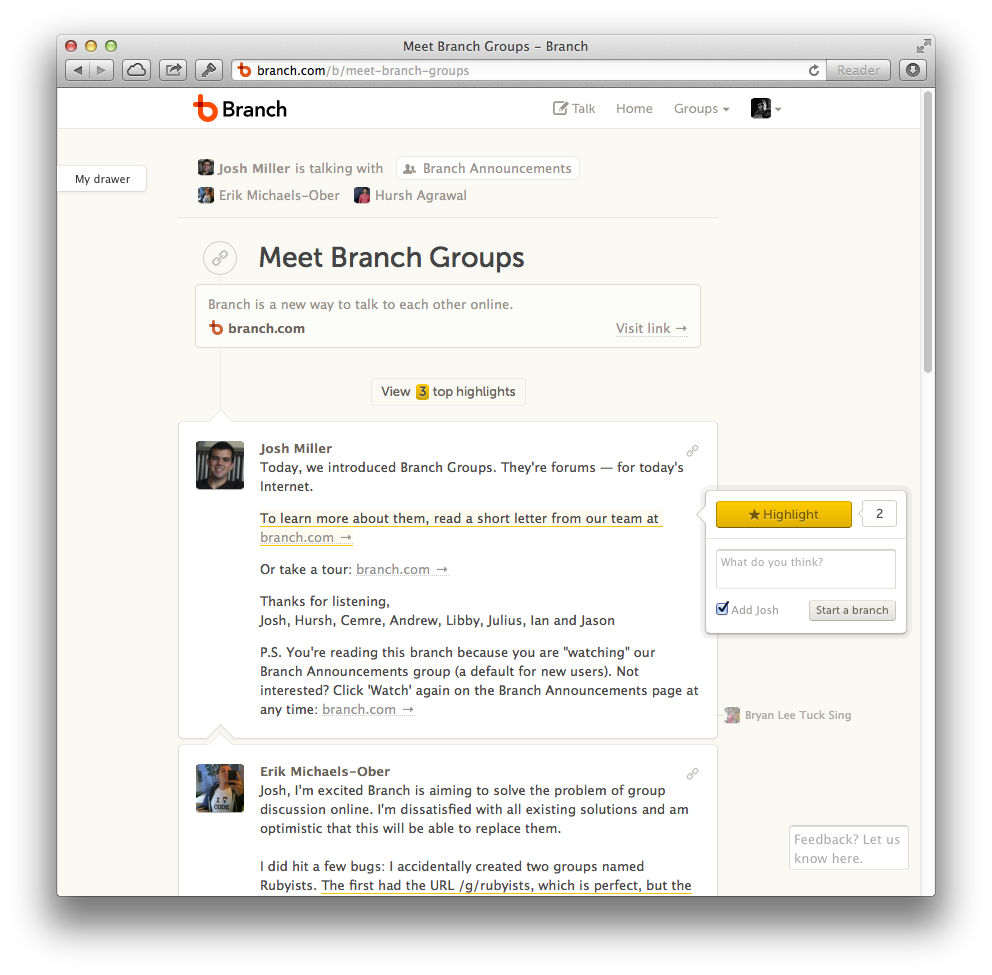January 17, 2013
What Blackboard Discussions Could Be

This is a screenshot of the newly released Branch, a next-generation platform for online discussions. The first thing I thought when I saw Branch was, “Why can’t Blackboard discussions be like this?”
I recently took a course with a barely-used Blackboard discussion board. Vibrant online discussion would have added a lot to this class, and I think the only thing standing in the way was Blackboard’s bad user experience.
Blackboard is at best functional for non-collaborative functionality like submitting assignments, taking quizzes, and downloading course materials. But it completely fails as a platform for collaboration among students and faculty.
Comparing Blackboard’s discussions to Branch exemplifies this. Where Branch is well-designed and easy to use, Blackboard is clunky and frustrating.
Reading a discussion on Branch is a pleasure: it’s all on one page, you can highlight and comment on individual sentences in others’ posts, and there are social features for pulling in your friends. The design is visually appealing, easy to understand, and directs the user’s focus toward the content.
In contrast, Blackboard discussions require many clicks to navigate, responses from the server seem slow, the interface icons are inscrutable, and the interface in general is poorly designed. There’s no equivalent to the @-reply to invite other users to join the conversation.
When it comes down to it, Blackboard discussions are worse than a simple email listserv: commenters on Blackboard can’t even subscribe to email notifications for their discussions, forcing users to manually check for new posts. The result is, not surprisingly, very low engagement.
(It’s worth mentioning Basecamp Breeze here, a new listserv product that could be used in the classroom essentially for free. If I was teaching a class, I would replace the discussion, course material distribution, and announcement functionality of Blackboard with this.)
I also wish that Blackboard offered the opportunity to share a discussion publicly. For some topics, such as those involving new research or current events, discussion could serve a wider purpose such as content for a student’s own blog. Informed outsiders could be brought in to add for the conversation – Branch’s invite-only model for joining discussions could work well here.
Blackboard’s lag behind the cutting edge is certainly not unique in software that sits towards the latter end of the consumer-enterprise spectrum. But as faculty become aware of alternatives, Blackboard will have to innovate or it will be replaced.
Let me know what you think on Branch.
Comments? Please send me a message.